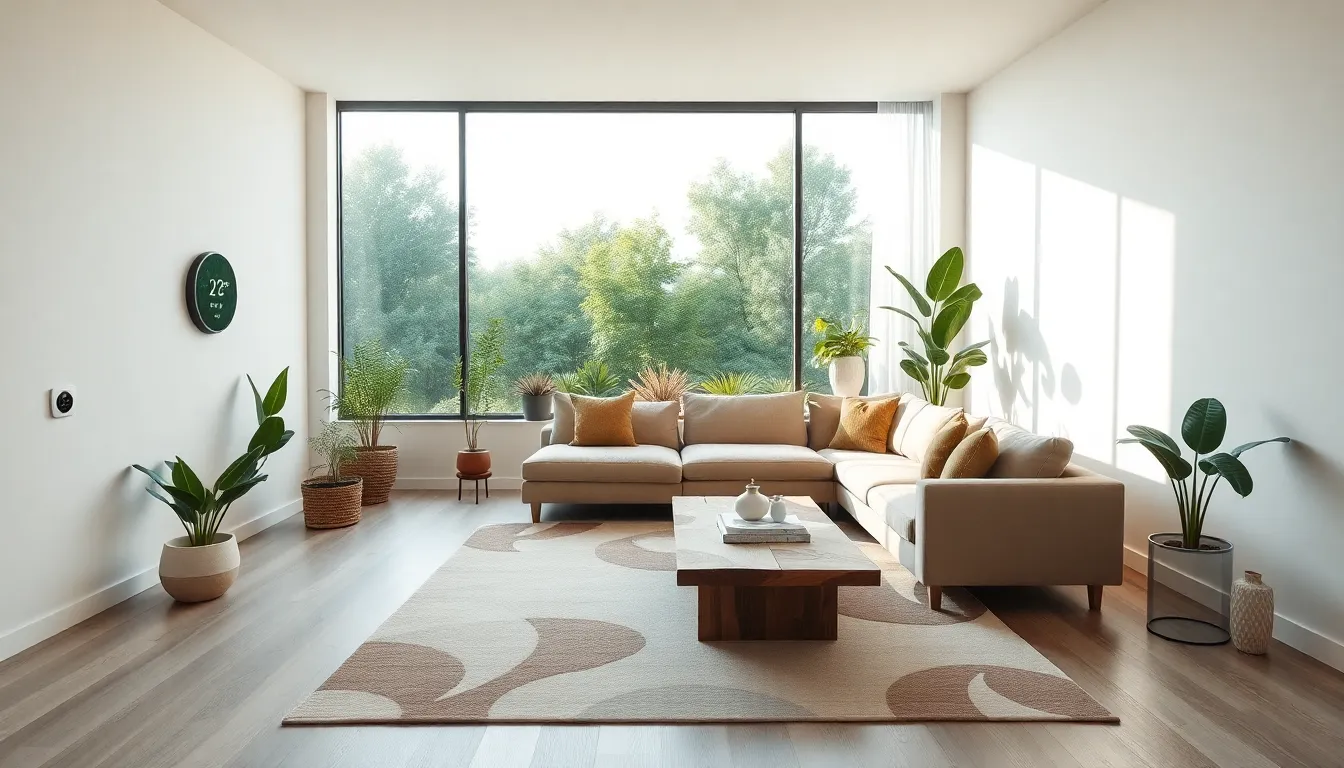In an ever-evolving world of interior design, understanding key trends and elements is essential for creating spaces that are not only functional but also aesthetically pleasing. At Homerocketrealty, the focus on modern interior designs showcases how thoughtful planning can transform a house into a home. This article delves into the latest interior design trends, essential elements, and practical tips for personalizing your space, all while emphasizing a confident and knowledgeable approach to creating beautiful interiors.
Table of Contents
ToggleUnderstanding Modern Interior Design Trends

Modern interior design is characterized by clean lines, minimalism, and a harmonious blend of form and function. One standout trend is the use of natural materials, which not only appeal to the eye but also promote a healthier living environment. Biophilic design, which incorporates elements of nature into the indoor space, has gained popularity as it fosters connection with the outdoors. Homeowners are increasingly favoring designs that emphasize sustainability, using recycled materials and eco-friendly furnishings.
Besides, technology plays a pivotal role in shaping modern interiors. Smart home devices are becoming staples in contemporary design, allowing homeowners to control everything from lighting to temperature via smartphones. This seamless integration of technology allows for customizable environments that enhance comfort and convenience, emphasizing the need for adaptability in design choices.
Key Elements of Interior Design
Every well-designed space comprises essential elements that work together to create a cohesive look.
Choosing the Right Color Palette
The first step in interior design is selecting a color palette that reflects the homeowner’s personality while also setting the desired mood for the space. Different colors evoke various emotions: for instance, blues and greens create calmness, while yellows and oranges infuse energy and warmth. To achieve balance, it’s beneficial to use a combination of neutrals for a timeless backdrop and accent colors that highlight distinct features of the room.
Incorporating Textures and Materials
Texture adds another dimension to design, transforming ordinary spaces into extraordinary ones. Mixing materials such as wood, metal, and fabric creates visual interest and depth. For example, a sleek leather sofa can contrast beautifully with a rustic wooden coffee table. Utilizing a variety of textures also enhances the sensory experience, ensuring that the interiors are as inviting as they are beautiful.
Must-Have Furniture Pieces
Certain furniture pieces are crucial in defining the character of a room. Selecting the right items can elevate a space from functional to fabulous.
Maximizing Space in Design
In smaller homes or apartments, the focus should be on furniture that maximizes space. Consider multifunctional furniture, such as a sofa bed or a coffee table with storage, which saves square footage without sacrificing style. Built-in shelves and wall-mounted tables can also create an illusion of space, keeping the environment open and airy.
Utilizing Open-Concept Layouts
Open-concept layouts remain a favorite among homeowners, allowing for fluidity between spaces. This design not only encourages social interaction but also makes a space feel larger. To successfully carry out an open layout, it’s important to define areas through furniture placement and color schemes that seamlessly connect the different zones.
The Role of Lighting in Interior Design
Lighting serves as a vital component of interior design, capable of transforming an ambiance entirely. Different types of lighting, ambient, task, and accent, should be used strategically.
Sustainable Design Practices
Sustainable lighting solutions such as energy-efficient bulbs and smart lighting systems contribute to eco-friendly design while reducing electricity costs. Utilizing natural light wherever possible can elevate the aesthetic, making rooms appear brighter and more inviting. Strategies include placing mirrors strategically to reflect light and using sheer window treatments that allow sunlight to permeate the space.
Smart Home Integration
Also, integrating smart lighting solutions is gaining traction. These systems provide homeowners with the ability to control lighting through voice commands or mobile applications, enhancing convenience and efficiency in usage.
Personalizing Your Space
Adding personal touches is what truly makes a space feel like home. Incorporating elements that reflect individual style can create a more meaningful environment.
Incorporating Personal Style
Every homeowner has a unique style that deserves to shine through in their living spaces. From selecting favorite colors to choosing design motifs that resonate personally, embracing individuality in design is essential for a satisfying outcome. Mixing different styles, like contemporary art with vintage furniture, can also create an eclectic vibe that feels curated and intentional.
Art and Decorations that Reflect Identity
Artwork and decorations serve as visual storytelling devices, turning blank walls into canvases of expression. Displaying photographs, sculptures, and handmade crafts can invite conversation and evoke cherished memories. It’s important to arrange these pieces thoughtfully, considering balance and scale to avoid overwhelming the senses.
Conclusion
The world of interior design offers endless possibilities for personalization and creativity. By understanding modern trends, key elements, and the importance of light and space, homeowners can create environments that not only look beautiful but also feel welcoming. At Homerocketrealty, the commitment to bringing innovative designs to life provides clients with the tools they need to transform their spaces. Embrace the power of design, and let each room tell your unique story.


